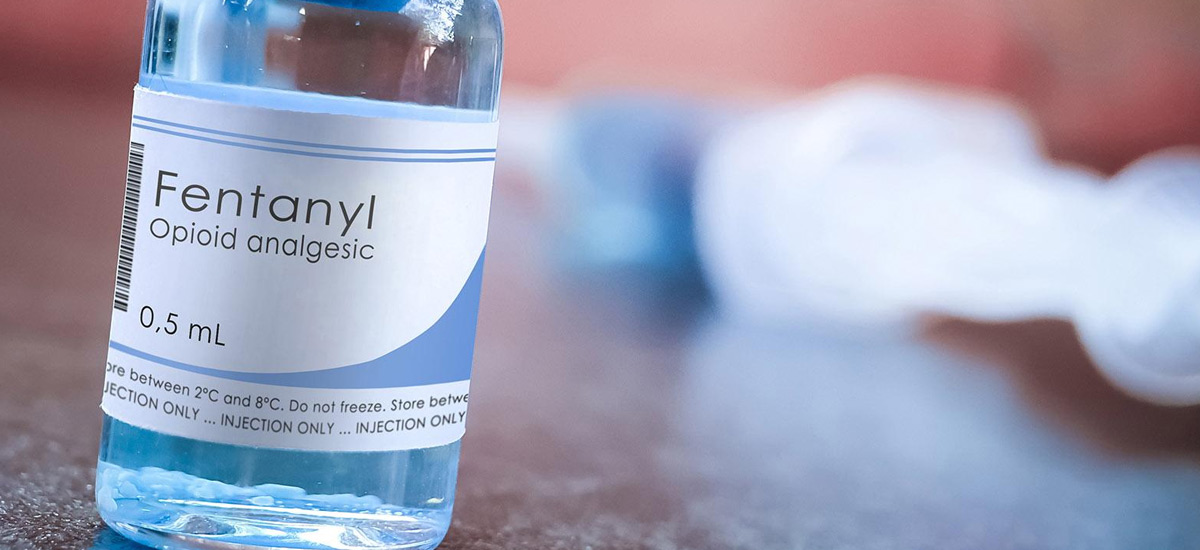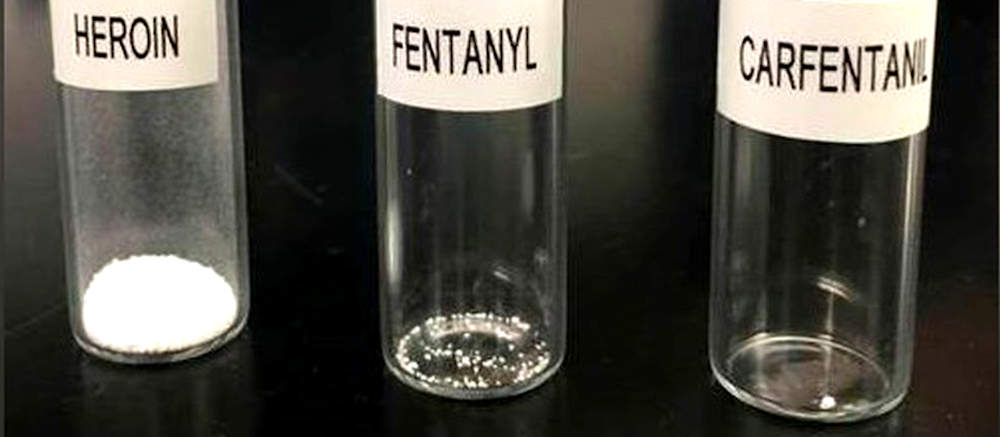by oanetwork
Share
by oanetwork
Share

Fentanyl-laced heroin killing users across the nation
The opiate crisis continues to snowball, in part because new versions and types of opioids and other drugs keep finding their way onto the streets – a fact that is manifestly evident across the nation as it has been for some time now. Fentanyl, a synthetic cousin of heroin, is one of the absolute worst offenders and has been for several years now.
Fentanyl-laced heroin has been one of the primary trends in heroin addiction since at least 2000, but is more of an issue today than ever; it’s now taking thousands of lives annually.
The bad news about fentanyl hit the mainstream news media in 2016 when it was reported that popular musician Prince had died from an overdose that included fentanyl. In one of the most highly publicized fentanyl cases in the news back then, fentanyl-laced hydrocodone tablets were found on Prince’s estate. Prince was 4th on the list of top Google searches in 2016; this resulted in multitudes of people learning about fentanyl and the dangers posed by it.
Fentanyl is far cheaper to make than heroin, and it is at least 50 times as potent, so illegal manufacturers can create more doses per batch – thus giving the drug an absolutely huge profit margin.
How strong is fentanyl?
Depending on various factors, fentanyl is up to 100 times more potent than morphine and 10 to 20 times as potent as pure heroin. Most heroin on the streets is far from pure, so pure fentanyl could in some cases be 40 and up to 50 times as potent as the heavily cut heroin some addicts are accustomed to using.
A lethal overdose of fentanyl is only about 3 milligrams, which looks like nothing more than a few grains of table salt. On the left of this photo is a lethal dose of heroin, equivalent to about 30 milligrams; on the right is a 3-milligram dose of fentanyl, enough to kill an average-sized adult male.
The difference in strength between fentanyl and heroin comes from differences in their chemical molecular structure. The chemicals in both fentanyl and heroin bind to the μ (mu) opioid receptors in the brain; however, fentanyl gets there faster than morphine (which is the almost-instantaneous byproduct when the body breaks down heroin) because fentanyl is highly fat soluble and more easily passes through the fat that is plentiful in the brain. (The human brain is the fattiest organ in the body and may consists of at least 60 percent fat.) Fentanyl also hugs the opioid receptors so tightly that only a minute amount kicks off the chemical chain of events that causes euphoria in the user.
Fentanyl is so potent it is often prescribed in micrograms rather than the usual milligrams. It hits users quickly – in five minutes or less – but wears off quickly as well, usually lasting around an hour.
What is carfentanyl?
Sadly, a drug called carfentanyl (also carfentanil, 4-carbomethoxyfentanyl) – 100 times as strong as fentanyl, if you can believe that – is now appearing in the United States and is killing drug users. It is marketed under the trade name Wildnil as a general anaesthetic agent for large animals, such as elephants. Please visit the Discovery Place blog again soon for more about carfentanil and other current trends in the U.S. opiate addiction epidemic.
Carfentanil – 10,000 times more potent than morphine – is an analog of fentanyl, making it among the most potent commercially used opioids. Carfentanil was first synthesized in 1974 by a team of chemists at Janssen Pharmaceutica. Side effects of carfentanil are similar to those of fentanyl, which include itching, nausea, and respiratory depression, the latter being potentially fatal.
Fentanyl analogs have killed hundreds of people throughout Europe and the former Soviet republics since the most recent resurgence in use began in Estonia in the early 2000s; the epidemic has been growing worse here in the United States, with virtually each year seeing an increase in overdose deaths. Many other unique fentanyl derivatives have also been created and distributed since. Carfentanil is classified as Schedule II under the Controlled Substances Act in the United States.
In 2016, carfentanil was identified as an ingredient in heroin batches sold and used in Ohio, creating a major spike in the number of overdose cases there. [ Heroin epidemic: Ohio is hardest hit by Chinese carfentanil trade, logging 343 of more than 400 seizures in U.S. (ohio.com) ]
What does fentanyl look like?
Fentanyl can take many forms. In general, fentanyl is a white powder, but it can also appear in pills of any color.
How to tell if heroin is laced with fentanyl
Unfortunately, it is virtually impossible tell by looking whether or not heroin has been laced with fentanyl. This is yet another reason for the massive increase in heroin-related overdoses.
Heroin and fentanyl can look identical, with some types of heroin being pure white like most fentanyl. Also, illegally manufactured fentanyl could come out less than snow white, which would give it an appearance closer to the beige-colored heroin many users are accustomed to. So, with drugs purchased on the street, one simply does not know what one could be ingesting – which sadly can be tantamount to injecting a loaded gun.
Drugs users rarely know whether their heroin has been laced with fentanyl, so when they inject, snort, or smoke their usual dose of heroin, they can inadvertently take a deadly dose of the far-more-powerful fentanyl. In addition, while dealers try to include fentanyl in the heroin they sell on the streets to improve its potency, the measuring equipment they use typically isn’t fine-tuned enough to ensure they stay below overdose levels. Plus, the fentanyl sold on the street virtually always originated from a clandestine lab in Mexico, China, or even the US. Illegally manufactured fentanyl is usually less pure than the pharmaceutical version and thus its potential effects on users can be much less predictable.
Are there drug checking methods available to test whether heroin contains fentanyl?
There is a great deal of skepticism regarding the usefulness and practicality of any analysis kits for fentanyl and other street drugs. Even if there were a reliable way to test for fentanyl using chemical reagents — a mix designed to react when it comes in contact with a specific substance — the whole concept is problematic, say the experts.
Pill checking, the common term in the medical community for the process of testing drugs using these chemical reagents, is not a highly reliable test in the first place. The successful use of pill checking would require those who are in a drug-using environment to:
- Use the chemical reagents in a technically correct manner
- Interpret the test results correctly
- Make the correct, potentially life-or-death decision based on the results of the chemical testing
The pill-checking/drug-checking process performed in the field is completely different than sending a drug sample to a crime lab for official identification.
However, fairly reliable pill checking test kits do exist for a variety of club drugs. some are sold on the Internet and even offered by harm-reduction groups like DanceSafe at electronic music festivals, commonly known as raves. Such tests involve adding a drop of reagent to a pill or powder and comparing the resulting colors with a standard chart. Theses tests can indicate the presence of the intoxicant club-goers and ravers hoped they bought as well as some, but not all, potentially dangerous ingredients club drugs are known to be cut with.
Last month, Insite, a supervised injection facility in Vancouver, British Columbia in Canada, began offering its clients instant test strips to determine whether their illicit drugs contain fentanyl. Insite is the first legal supervised drug injection site in North America, located in the Downtown Eastside (DTES) neighborhood of Vancouver. This troubled locale had 4,700 chronic drug users way back in 2000 and has been considered to be the epicenter of a heroin epidemic. Insite provides a safe and health-focused location for injection drug use, primarily heroin. The clinic itself does not supply any drugs. Medical staff are present to provide addiction treatment, mental health assistance, and first aid in the event of an overdose. (Source: Insite – Wikipedia)
A whopping 86% of the drugs tested at Insite have turned up positive for fentanyl.
Making the drug-checking process potentially even more dubious, there are now more than 30 analogues of fentanyl alone, and a number of lesser known synthetic opioid analogs.
Analogues or analogs are drugs that have a highly similar structural resemblance and similar effects to the original version. For instance, one could argue that naproxen (Aleve) is an analog of ibuprofen (Motrin/Advil). Most analogues are designed because synthetic versions of natural drugs are hard to make, lack sufficient potency, or have other shortcomings. For instance, morphine is poorly absorbed and of only moderate potency, but if it is converted into hydromorphone/Dilaudid or heroin (analogues of morphine) it gains potency and can be more completely absorbed in certain cases. The classical opiates are very hard to make in laboratories, so drugs like pethidine, methadone, and fentanyl were developed; the analogues are much easier to make and are not dependent on opium poppy production.
Fentanyl goes by many names…
Street names for fentanyl
-
- Apache
- China Girl
- China Town
- Dance Fever
- Drop Dead
- Friend
- Gone Wild: Newer fentanyl analogs
- Goodfella
- Great Bear
- He-Man
- Jackpot
- King Ivory
- Murder 8
- Perc-a-Pop: A berry-flavored lozenge containing on a stick designed to give relief to cancer patients that is being illegally diverted
- Serial Killer
- Tango & Cash
Street names for fentanyl-laced heroin
- Bud Ice
- China White
- Income Tax
- Incredible Hulk
- Theraflu
- TNT
Side effects and overdose of fentanyl & fentanyl derivatives
Drug users who take fentanyl develop tolerance to the drug, which means it requires increasing amounts of fentanyl to get high over time. A fentanyl overdose suppresses breathing and leads directly to respiratory arrest where breathing stops completely. Treatment for fentanyl overdose includes the administration of Narcan (naloxone, an opiate antagonist). Fentanyl overdoses are less responsive to Narcan than heroin, morphine, and other opiates; fentanyl overdoses often require multiple shots of Narcan.
Fentanyl is a highly addictive drug with acute withdrawal and potential post-acute-withdrawal syndrome including severe depression with suicidal ideation (thinking about suicide frequently). Most people withdrawing from fentanyl will experience flu-like symptoms complete with chills and fever; in fact, many actually believe they have caught the flu, not realizing just how addicted to fentanyl they have become. Others withdrawing from it also experience tachycardia (rapid heart rate).
List of fentanyl side effects
The typical side effects of fentanyl and its derivatives are similar to the side effects of other opioids, including:
- Itchiness
- Constipation
- Contracted, tiny, or “pinned-out” pupils
- Sedation
- Dizziness
- Dry mouth
- Nausea
- Vomiting
- Changes in weight
- Mood swings
- Stomach pain
- Sweating
- Restless leg syndrome
Legitimate uses of fentanyl
- Anesthesia
- Breakthrough pain
- Chronic pain
- Dercum’s disease
- Postoperative pain
- Sedation
Troubling statistics
At least 28,000 people died of opioid overdoses in 2014, the highest number of deaths in U.S. history. Of those, fentanyl was involved in 5,554 fatalities, a 79 percent increase over 2013, according to a December CDC report.
In the United States, there were 9,580 synthetic opioid overdose deaths (including fentanyl and tramadol, excluding methadone) in 2015.
Resources – Trends in Heroin Addiction: Fentanyl-Laced Heroin
- Fentanyl-Laced Heroin Worsening Overdose Crisis, Officials Say – Partnership for Drug-Free Kids
- DEA Issues Alert on Fentanyl-Laced Heroin as Overdose Deaths Surge Nationwide – Partnership for Drug-Free Kids
- What You Need to Know About Fentanyl-Laced Heroin – Project Know
- Why Fentanyl is deadlier than heroin – PBS NewsHour
- Fentanyl – National Institute on Drug Abuse (NIDA)
- El Chapo and the Secret History of the Heroin Crisis – Esquire
- Fentanyl: The powerful opioid that killed Prince – CNN.com
- Heroin Epidemic Is Yielding to a Deadlier Cousin: Fentanyl – The New York Times
- Fentanyl Outpaces Heroin as the Deadliest Drug on Long Island – The New York Times
- Heroin Deaths Tied to Powerful Drug Carfentanil: What Is It? – Time.com
- Lethal doses of heroin and fentanyl side by side – Reddit
- Fentanyl: The Drug Deadlier than Heroin – YouTube
- As Fentanyl Deaths Spike, States and CDC Respond – Pew Trusts
- Illegally Made Fentanyl Seems To Be Fueling A Spike In Overdoses – NPR Health News
- Synthetic Opioid Data: Drug Overdose – CDC Injury Center
- Fentanyl Drug Overdose – CDC Injury Center
- How Knockoff Fentanyl Dodges Cops: The synthetic opioid that killed Prince is part of a tangled international network of copycat drugs, and it’s impossible for authorities to keep up – Huffington Post
Fentanyl in the news
- Fentanyl-related deaths skyrocket in Baltimore: DEA official says drug difficult to detect in mail – WBAL TV
- Total of 343 fentanyl deaths in Alberta last year prompts government action – Edmonton – CBC News
- 55 pounds of death: Connecticut police bust truck carrying enough fentanyl to kill everyone in the state — twice – Vice News
HELP IS AVAILABLE
Do You Have a Loved One Struggling with Addiction or Mental Health Issues?
Fentanyl is a potent synthetic opioid that is used to manage severe pain. It is also one of the most addictive drugs available, and its misuse has caused an unprecedented increase in overdose deaths in recent years. In this blog post, we will explore the addictive qualities of fentanyl and the dangers of its use […]
What is fentanyl? Fentanyl (aka fentanil, fentanyl citrate, acetyl fentanyl) is a synthetic (man-made) opioid pain medication with a rapid onset and a relatively short half-life, which determines the duration of action. For the more technically inclined, it is a potent agonist at the μ-opioid receptors. As such, fentanyl is generally prescribed only for patients […]



